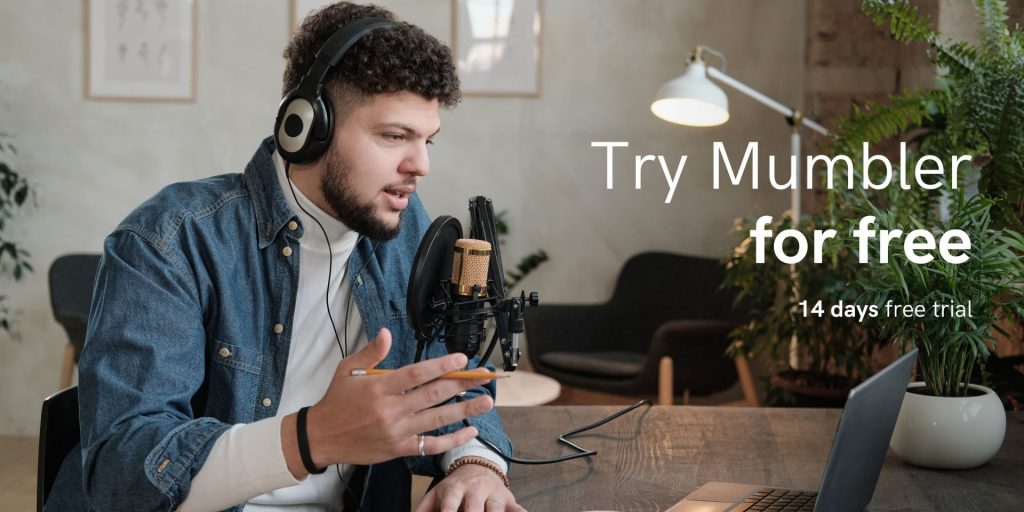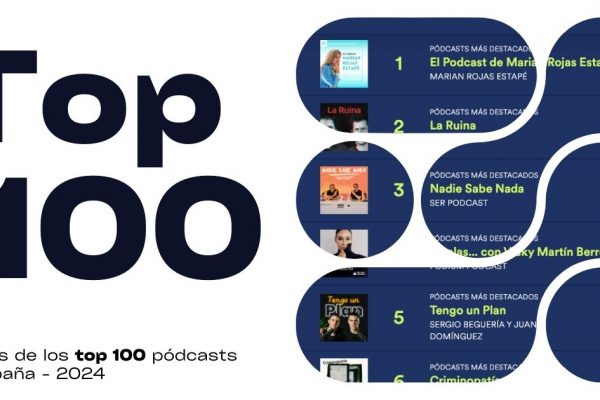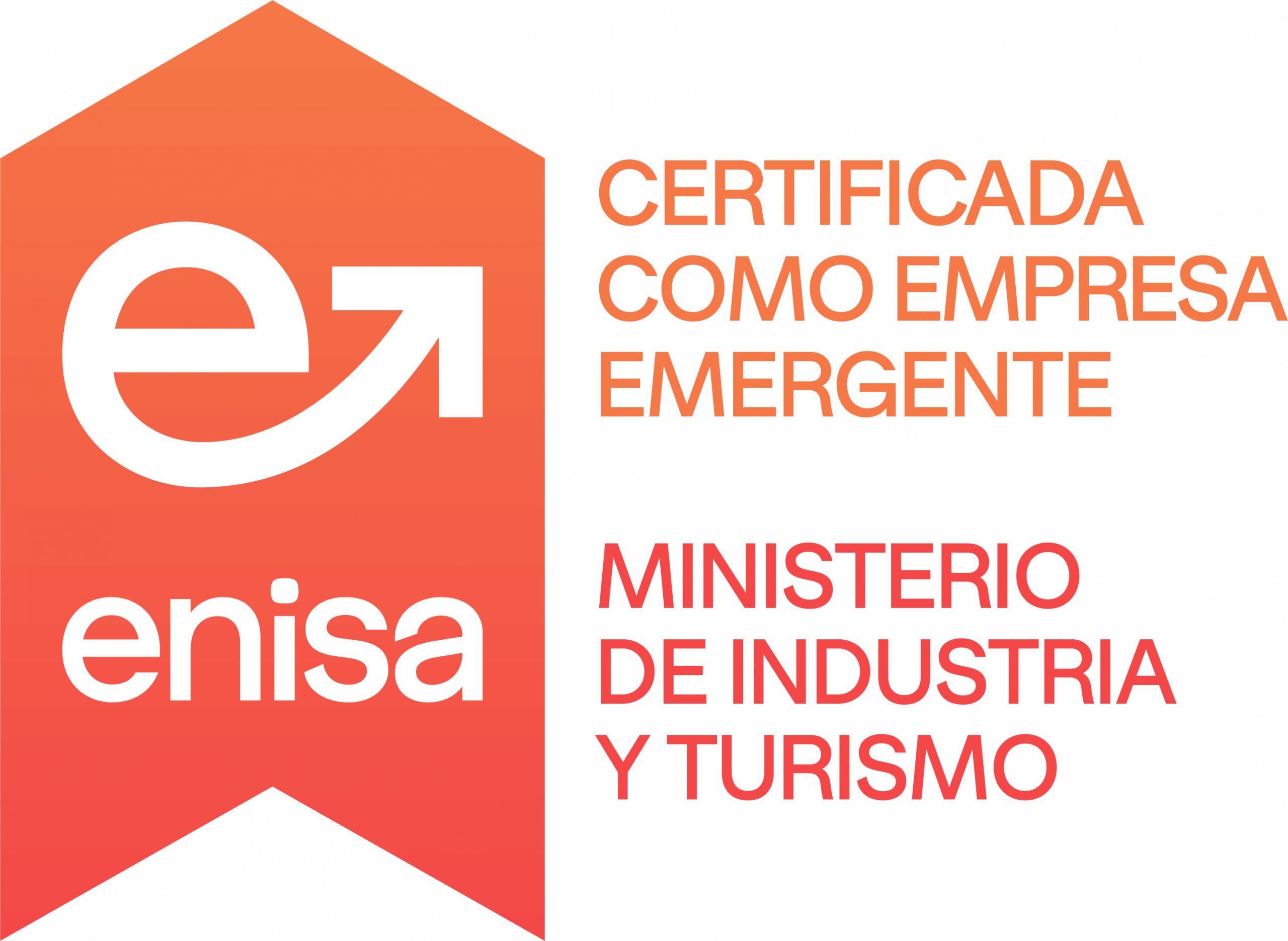Having a successful newsletter can become one of the most important marketing tools for content creators.
However, knowing that we are on the right path is not as simple as it may seem.
That's why we find it interesting to develop a guide that can help us find the right path to follow.
Introduction to the keys to a successful newsletter
Newsletters have become an essential tool for creators seeking to establish strong connections with their audience and monetize their content effectively.
In a digital world where attention is a valuable resource and competition is fierce, a well-designed and strategically planned newsletter can make the difference in the growth of your online presence. en el crecimiento de tu presencia en línea.
In this section, we will explore the fundamental keys required for a successful newsletter and how each of these keys can contribute to your success as a creator.
Having a successful newsletter is not just about sending regular emails to your audience.
It requires a strategic approach and a constant commitment to deliver real value to your contacts.
But let's begin by breaking down what, for us, are the keys to success that will guide you in creating and managing an effective newsletter..
Understanding your objectives.
Before embarking on the creation of a newsletter, it is vital that you define clear and specific objectives.
Do you want to increase the loyalty of your followers? Monetize your content through promotions and offers? Establish your expertise in a particular field?
Keeping your goals in mind will help you design a coherent and focused strategy.
Identifying your audience:
Knowing your audience is the foundation of any successful newsletter strategy.
Who are your ideal contacts? What interests them? What are their challenges and needs?
By deeply understanding your audience, you'll be able to create content that resonates with them and keeps them engaged.
Strategic planning:
Each newsletter should be part of a global strategy. global.
Decide what type of content you will share in each delivery, what will be the frequency of your emails, and how each piece will fit into your overall objectives.
Strategic planning will allow you to maintain consistency and prevent your contacts from feeling overwhelmed or disinterested.
Providing constant value:
The key to retaining your contacts is to provide them with constant value in every email.
Whether through helpful tips, exclusive information, or entertainment, your content should be relevant and meaningful to your audience.
Building relationships:
A successful newsletter is not just about conveying information but also about building genuine relationships with your contacts.
Encourage interaction, respond to comments and questions, and demonstrate your authenticity.
Strong relationships can lead to greater loyalty and engagement.
In summary, a successful newsletter is not just a marketing tool, but an opportunity to connect deeply with your audience and provide them with continuous value.
Let's delve into these points in greater detail to gain a deeper understanding and implement an effective strategy that helps you achieve your goals as a creator and have a successful newsletter.
Knowing your audience: What interests them?
One of the cornerstones for the success of your newsletter lies in a deep understanding of your audience.
Knowing who your contacts are,what motivates them, and what challenges they face will allow you to create content that is relevant and meaningful to them.
In this section, we will explore how to research and get to know your audience thoroughly to ensure that every email you send is a valuable experience for your contacts.
Creating audience profiles:
The first step in getting to know your audience is to create detailed profiles.
This goes beyond simple demographic data; it's about understanding their interests, hobbies, aspirations, and problems.
Research their online behaviors, social media engagement, and comments on your posts to build a complete picture.
Surveys and feedback:
Surveys are powerful tools for collecting direct information from your subscribers.
Ask about their content preferences, topics they'd like to explore, and the frequency of emails they wish to receive.
Also, encourage open feedback to understand their expectations.
Data analysis:
Analytics tools will provide valuable information about your subscribers' behavior.
Examine open rates, link clicks, and reading times to understand which types of content are more appealing and which generate less interest.
Trend watching:
Keep an eye on current trends in your niche or industry.
What topics are sparking discussions? What questions are frequently asked?
Adapting your content to trends can increase relevance and interest among your subscribers.
Audience segmentation:
As you gather more information about your audience, you can divide it into more specific segments.
This will allow you to send highly relevant content to each group, increasing the likelihood of engagement.
Active listening:
Don't underestimate the value of active listening on social media and in the comments on your blog.
Conversations and questions from your followers can reveal what truly interests and concerns them.
Understanding your audience is not a one-time process; it's an ongoing journey of research and adaptation.
The better you understand your subscribers, the more you can personalize your content and establish meaningful connections..
By paying special attention to these points, you can develop quality content to provide real value to your subscribers and have a successful newsletter.

Quality content: Providing value to your contacts
A successful newsletter is built upon a foundation of high-quality content that resonates with your subscribers and provides them with real value.
In this section, we will explore how to create content that educates, entertains, and addresses the problems of your subscribers, thereby establishing a strong and lasting relationship with them.
Identification of needs and desires:
Based on the understanding you have gained about your audience, identify the needs and desires they have.
What frequently asked questions do they have? What challenges do they face?
Design your content to address these concerns and provide practical solutions.
Diversity of formats:
Don't limit yourself to a single content format.
Experiment with a variety of types, such as informative articles, tip lists, interviews, videos, or infographics.
Different formats will keep your subscribers engaged and add variety to your newsletter.
Originality and exclusivity:
Offer exclusive content that is only available to your subscribers.
This can include previews of your upcoming projects, special discounts, or behind-the-scenes information.
The feeling of exclusivity fosters loyalty among your subscribers.
Teaching strategy:
If you have expertise in a specific area, use your newsletter as a platform to teach your subscribers.
Provide practical information, tutorials, or tips that help them improve their skills or solve problems.
Personal narratives:
Sharing personal stories related to your experiences can help humanize your content.
Connecting with your subscribers on an emotional level can strengthen your relationship with them.
Respect for reader's time:
Brevity is key in a newsletter.
Focus on delivering valuable information in a concise and easily digestible manner.
Readers will appreciate content that respects their time and provides relevant information without straying too far.
Strategic calls to action:
Whenever you provide information, include relevant calls to action.
This could be encouraging readers to leave comments, share content on social media, or explore more resources on your website.
Feedback and adaptation:
Observe how your audience reacts to different types of content.
Pay attention to metrics and comments to understand what works best.
Adjust your content strategy accordingly.
Maintaining balance:
Find a balance between promotional and informative content.
While it's acceptable to include promotions, the content should provide value independently of sales.
Creating quality content is the heart of your successful newsletter.
By offering authentic and useful value, you will establish a strong foundation to keep your subscribers engaged and eager for your future emails, thus building a successful newsletter.
In addition to quality content, we must also pay special attention to the design of our newsletter.
Attractive design: Capturing attention visually
First impressions matter, and in the case of a newsletter, design is the key factor in capturing the attention of your subscribers.
An attractive and visually pleasing design not only makes your content more enjoyable to read but also reflects the professionalism and identity of your brand.
Let's see how to do it effectively so that it's not only appealing but also functional.
Choice of colors and typography:
Select a color palette that aligns with your brand's identity.
Colors can convey emotions and associations, so choose wisely.
Additionally, choose a readable font for the body text and a more distinctive one for headings.
Responsive design:
Ensure that your design is responsive, meaning it adapts to different devices and screen sizes.
Many of your subscribers will read your newsletter on mobile devices, so it's crucial that the design looks good on all screens.
Use of images and graphics:
Images and graphics can complement your content and make it more appealing.
Use high-quality images that are relevant to the content and avoid excessive use to avoid visually overwhelming your emails.
Clear structure and visual hierarchy:
Organize your content clearly and use a visual hierarchy to highlight the most important information.
Use headers, bullet points, and bold text to separate sections and guide readers through the content.
Whitespace:
Don't be afraid to use whitespace.
Whitespace helps provide visual relief and highlight important elements.
A cluttered design can be overwhelming for readers.
Visual calls to action:
If you have calls to action (CTAs) in your newsletter, ensure they are visually attention-grabbing.
Use contrasting colors and a design that makes them stand out so subscribers know exactly what action to take.
Brand consistency:
Maintain visual consistency with your brand at all times.
Use design elements like logos and colors that subscribers can easily associate with you.
Testing and optimization:
Before sending your newsletter, conduct tests to ensure the design looks correct on different platforms and devices.
Make adjustments as needed and pay attention to subscriber feedback on the newsletter's appearance.
An attractive design not only enhances your content but also improves the reading experience for your subscribers.
Undoubtedly, having a good sending frequency can also help you have a successful newsletter.
Appropriate frequency: Neither too much nor too little
The frequency at which you send your newsletter plays a crucial role in your relationship with your subscribers..
Sending too many emails can overwhelm them and lead to unsubscribes, while sending too few can make them lose interest.
Let's see how to find the right balance in the sending frequency to keep your subscribers engaged and satisfied.
Audience understanding:
Understanding your audience is key to determining the ideal frequency.
What type of content do they prefer? How many emails do they consider appropriate to receive per week or month?
Conduct surveys or study your subscribers' behavior to get a clear idea.
Consistent schedule:
Maintain a consistent schedule for your send-outs.
Whether it's weekly, bi-weekly, or monthly, consistency creates expectations among your subscribers and helps them anticipate your emails.
Avoiding overload:
Avoid sending emails too frequently, as this can lead to subscriber fatigue.
If you flood their inboxes, they are likely to unsubscribe or ignore your messages.
Valuable content in every send:
Whenever you send an email, ensure it contains valuable content.
Don't clog your subscribers' inboxes with substance-less content just to meet the frequency.
Subscriber segmentation:
Consider segmenting your subscribers into groups with different interests and preferences.
This allows you to send more specific and relevant content, which may justify a higher sending frequency.
Monitoring open rates:
Keep a close eye on the open rates of your emails.
If you start to see a significant decrease in opens, it may be a sign that you're sending too frequently or that the content isn't compelling enough.
Flexibility and adaptation:
As you grow and evolve, you may need to adjust your sending frequency.
Stay open to feedback from your subscribers and be flexible to make changes as necessary.
Periodic surveys:
Occasionally, conduct surveys to gather your subscribers' opinions on the frequency of your emails.
This will provide valuable insights to make informed decisions.
Ultimately, finding the right sending frequency is a balancing act.
It's about consistently providing valuable contentwithout overwhelming your subscribers.
By keeping an eye on metrics and listening to your audience, you can adjust your strategy and keep your subscribers engaged over time.
Once this entire situation has been assessed, it's time to promote our newsletter to continue its growth.
Effective promotion: Growing your subscriber base
A successful newsletter is not just about creating quality content but also ensuring that it reaches as many interested people as possible.
In this section, we will explore effective strategies to promote your newsletter and significantly increase your subscriber base.
Clear calls to action:
Incorporate clear and compelling calls to action in your content and on your website.
Encourage your readers to subscribe and explain the benefits they will receive by doing so.
Visible subscription forms:
Place subscription forms in strategic locations on your website and in your posts.
The forms should be visible and easily accessible without being intrusive.
Offer incentives:
Attract new subscribers by offering incentives such as a free ebook, a downloadable guide, or exclusive access to premium content.
This can motivate people to join your list.
Collaborations and partnerships:
Collaborate with other creators or brands in your niche to mutually promote each other's newsletters.
This can help expose your content to new interested audiences.
Use of social media:
Promote your newsletter on your social media profiles.
Share teasers of the content subscribers can expect and highlight the benefits of joining your list.
Webinars and live events:
Host webinars or live events where you can share valuable content with your followers.
Use these events to promote your newsletter and encourage people to subscribe.
Engagement in groups and communities:
Join online groups and communities related to your niche.
Participate actively and share your expertise, then invite interested members to join your newsletter.
SEO optimization:
Optimize your website and content for search engines.
This will increase your online visibility and attract people who are searching for similar content.
Paid advertising:
If you have the budget, consider investing in online advertising to promote your newsletter.
Ad platforms allow you to target your audience and reach interested individuals.
Referrals and recommendations:
Encourage your existing subscribers to recommend your newsletter to their friends and followers.
Personal recommendations often lead to higher conversions.
Continuous promotion:
Promoting your newsletter is not a one-time effort.
Continue to promote it regularly and look for new opportunities to reach your target audience.
As you implement these strategies, remember that effective promotion takes time and ongoing effort.
The key is to find a balance between promotion and delivering valuable content to your subscribers.
But how can you determine if you have a successful newsletter?
Let's see how we can measure it.

Measuring success: Analyzing metrics and adjusting strategy
A fundamental part of maintaining a successful newsletter is measuring its performance and adjusting your approach based on the results.
Metrics provide valuable insights into what is working and what needs improvement.
Let's explore how to analyze your newsletter metrics and how to use that data to adjust and enhance your strategy.
Open rates:
Open rates indicate how many of your subscribers open your emails.
If you notice that these rates are low, you may need to work on more engaging subject lines or content segmentation.
Click-Through rates:
Click-through rates indicate how many of your subscribers click on the links within your emails.
This can help you understand which content is more appealing and adjust your calls to action.
Conversion rates:
If your goal is to lead your subscribers to take a specific action, such as purchasing a product or signing up for an event, conversion rates are crucial.
Evaluate how your subscribers are responding to your calls to action.
Unsubscribe rates:
While it can be discouraging to see subscribers unsubscribe, unsubscribe rates provide insights into which content or approach is not resonating with your audience.
Use this feedback to adjust your strategy.
Reading time:
The time your subscribers spend reading your emails can provide insights into the quality and interest of your content.
If reading times are low, it could be an indication that the content is not sufficiently engaging.
Comments and responses:
Pay attention to the comments and responses from your subscribers.
These can provide a deeper insight into how they are reacting to the content and which topics interest them.
Comparison over time:
Regularly compare your metrics to identify trends.
Are open and click-through rates improving over time? Which content has had a greater impact?
Satisfaction surveys:
Occasionally, conduct surveys with your subscribers to assess their overall satisfaction with your newsletter.
Ask about their experience and what they would like to see in the future.
Data-Driven adjustments:
Use the collected data to make adjustments to your strategy.
If certain types of content perform better, focus more on them.
If you notice that certain topics have high unsubscribe rates, reconsider your approach.
Continuous experimentation:
Don't be afraid to experiment with new approaches and changes to your strategy.
Metrics will help you determine which changes are effective and which are not.
Analytics and adaptation are key components of any successful strategy.
Through constant observation and data-driven adaptation, you can continuously improve your newsletter and maintain subscriber engagement and satisfaction.
In conclusion, what are the most important aspects of having a successful newsletter?
So, how do we go about having a successful newsletter?
En un mundo digital cada vez más competitivo, una newsletter bien planificada y ejecutada puede marcar la diferencia para los creadores que desean establecer conexiones sólidas con su audiencia y monetizar su contenido.
Throughout this article, we have explored the essential keys to having a successful newsletter that resonates with your subscribers and helps you achieve your goals as a creator.
From understanding your audience and providing valuable content to designing an appealing presentation and finding the right sending frequency, each step is crucial to build and maintain an engaged subscriber base.
Furthermore, effectively promoting your newsletter and using analytical data to adjust your strategy will allow you to grow and adapt as your audience and goals evolve.
Remember that the success of a newsletter is not an instant outcome but an ongoing and evolving effort.
Maintain an open mindset towards experimentation, listen to your subscribers, and adapt your approach based on the results you obtain.
Ultimately, your newsletter is a powerful tool to connect with your audience, share your expertise, and provide real value.
By following these keys and tips, you'll be well on your way to creating and maintaining a successful newsletter that benefits both you and your subscribers.
If you're considering launching your newsletter, open your creator page on Mumbler and start building a database interested in your content.
About the author
Content Manager at Mumbler.
Podcaster and content creator.
Passionate about communication and a fan of the WordPress community.
I talk about movies and series on Babel Infinito.
I talk about podcasting on Todo por Un Podcast.








